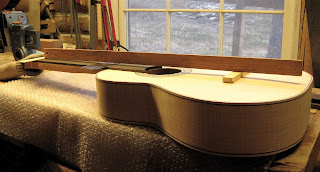Posts
Showing posts from April, 2014
Seven String Classical Guitar: Checking the Neck Angle and Starting the French Polish
- Get link
- X
- Other Apps
Seven String Classical Guitar: Using a Veneer Scraper and Installing Curly Maple Bindings
- Get link
- X
- Other Apps

